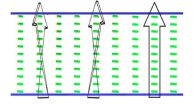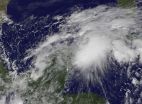(Press-News.org) Following the study of a hospital that logged more than 2.5 million patient monitoring alarms in just one month, researchers at UC San Francisco have, for the first time, comprehensively defined the detailed causes as well as potential solutions for the widespread issue of alarm fatigue in hospitals.
Their study is in the Oct. 22 issue of PLOS ONE and available online.
The issue of alarm fatigue has become so significant that The Joint Commission, a national organization that accredits hospitals, named it a National Patient Safety Goal. This goal requires hospitals to establish alarm safety as a priority, identify the most important alarms and establish policies to manage alarms by January 2016.
"There have been news stories about patient deaths due to hospital staff silencing cardiac monitor alarms and alerts from federal agencies warning about alarm fatigue," said senior author Barbara Drew, PhD, RN, David Mortara Distinguished Professor in Physiological Nursing in the School of Nursing at UCSF. "However, there have been little data published on the topic to inform clinicians about what to do about the problem. Our study is the first to shed light on cardiac monitor alarm frequency, accuracy, false alarm causes and strategies to solve this important clinical problem."
Alarm fatigue occurs when clinicians become desensitized to the constant noise of alarms and ignore them or turn them off. Among the numerous detrimental results are anxiety in hospital staff and patients, sleep deprivation among hospitalized patients, and missed life-threatening heart rhythm events.
In the PLOS ONE observational study, the largest of its kind to date, Drew and her research team stored monitor data on 461 adults treated in five intensive care units (ICU) at UCSF Medical Center over a 31-day period. The data came from electrocardiogram (ECG) leads (electric cables attaching the electrodes to the recorder); pressure, blood oxygen saturation and respiration waveforms; and user settings and alarms, among other technology.
During that time period, a staggering 2,558,760 unique alarms were recorded, many caused by a complex interplay of inappropriate user settings, patients' conditions and computer algorithm deficiencies. This includes a subset of 1,154,201 arrhythmia alarms, of which 88.8 percent were determined to be false positives caused by the algorithm deficiencies.
Based on these findings and earlier studies, the researchers suggest that medical devices focus on using all available ECG leads to identify the non-disruptive leads and the leads with adequate QRS waveform amplitude. These devices also should provide prompts to aid in more appropriate tailoring of alarm settings to individual patients. And, atrial fibrillation alarms should be limited to new onset and termination of the arrhythmia, with delays for ST-segment and other parameter alarms able to be configured.
"Nurses and patients are barraged by a staggering number of monitor alarms that could be resolved by improved computer algorithms," Drew said. "Our results shed light on the high prevalence of alarms that are mostly false and provide insights into the causes of so many false alarms, along with suggestions for device improvement."
Drew and her colleagues anticipate their study will be cited by current working groups attempting to solve alarm fatigue, led by The Joint Commission, the Association for the Advancement of Medical Instrumentation (AAMI), the International Society for Computerized Electrocardiology (ISCE), the Emergency Care Research Institute (ERCI), the American Heart Association, and the U.S. Food & Drug Administration (FDA) Center for Radiological Devices & Health.
"Because computer devices are more reliable than humans, an opportunity exists to improve physiologic monitoring and reduce alarm fatigue," the authors write.
INFORMATION:
Other contributors to the PLOS ONE study from the UCSF School of Nursing were Patricia Harris, PhD, RN, assistant professor; Xiao Hu, PhD, associate professor; Tina Mammone, PhD, RN, administrative nurse; Daniel Schindler, MS, RN, predoctoral scholar; Rebeca Salas-Boni, PhD, postdoctoral scholar; Quan Ding, PhD, postdoctoral scholar; Yong Bai, PhD(c), predoctoral scholar; and Adelita Tinoco, MS, RN, predoctoral scholar. Jessica K. Zègre-Hemsey, PhD, RN, of the University of North Carolina School of Nursing, also contributed.
Financial support was provided by a grant from GE Healthcare.
UCSF is the nation's leading university exclusively focused on health. Now celebrating the 150th anniversary of its founding as a medical college, UCSF is dedicated to transforming health worldwide through advanced biomedical research, graduate-level education in the life sciences and health professions, and excellence in patient care. It includes top-ranked graduate schools of dentistry, medicine, nursing and pharmacy; a graduate division with world-renowned programs in the biological sciences, a preeminent biomedical research enterprise and top-tier hospitals, UCSF Medical Center and UCSF Benioff Children's Hospitals. Please visit http://www.ucsf.edu.
WASHINGTON, Oct. 22, 2014—At first glance, the static, greyscale display created by a group of researchers from the Hong Kong University of Science and Technology, China might not catch the eye of a thoughtful consumer in a market saturated with flashy, colorful electronics. But a closer look at the specs could change that: the ultra-thin LCD screen described today in a paper in The Optical Society's (OSA) journal Optics Letters is capable of holding three-dimensional images without a power source, making it a compact, energy-efficient way to display visual information.
Liquid ...
Tropical Depression Nine formed over the western Bay of Campeche, Gulf of Mexico and is forecast to make a quick landfall on Mexico's Yucatan Peninsula. NOAA's GOES-East Satellite captured the birth of the depression.
NOAA's GOES-East Satellite captured an image of the birth of Tropical Depression 9 on Oct. 22 at 1600 UTC (12 p.m. EDT) in the western Bay of Campeche. The clouds associated with the depression stretched over the Yucatan Peninsula and into the western Caribbean Sea.
On Oct. 22, a Tropical Storm Warning was in effect from Celestun to Frontera, Mexico. The ...
Beta Pictoris is a young star located about 63 light-years from the Sun. It is only about 20 million years old and is surrounded by a huge disc of material — a very active young planetary system where gas and dust are produced by the evaporation of comets and the collisions of asteroids.
Flavien Kiefer (IAP/CNRS/UPMC), lead author of the new study sets the scene: "Beta Pictoris is a very exciting target! The detailed observations of its exocomets give us clues to help understand what processes occur in this kind of young planetary system."
For almost 30 years ...
Tiny soil microbes are among the world's biggest potential amplifiers of human-caused climate change, but whether microbial communities are mere slaves to their environment or influential actors in their own right is an open question. Now, research by an international team of scientists from the U.S., Sweden and Australia, led by University of Arizona scientists, shows that a single species of microbe, discovered only very recently, is an unexpected key player in climate change.
The findings, published in the journal Nature, should help scientists improve their simulations ...
CANCER RESEARCH UK and UCL scientists have discovered that the same specialised immune cells that patrol the body and spot infections also trigger the expansion of immune organs called lymph nodes, according to a study* published in Nature today (Wednesday).
The immune system defends the body from infections and can also spot and destroy cancer cells. Lymph nodes are at the heart of this response, but until now it has never been explained how they expand during disease.
The researchers – at Cancer Research UK's London Research Institute – found that when ...
Sequencing the genomes of tumor cells has revealed thousands of genetic mutations linked with cancer. However, sifting through this deluge of information to figure out which of these mutations actually drive cancer growth has proven to be a tedious, time-consuming process.
MIT researchers have now developed a new way to model the effects of these genetic mutations in mice. Their approach, based on the genome-editing technique known as CRISPR, is much faster than existing strategies, which require genetically engineering mice that carry the cancerous mutations.
"It's ...
Thermal paper, sometimes used in cash register receipts, may be a potential source of exposure to the hormone disruptor bisphenol-A (BPA), according to a study published October 22, 2014 in the open-access journal PLOS ONE by Annette Hormann from University of Missouri and colleagues.
Results showed that when men and women handled a thermal receipt after using a hand sanitizer, there was a very large amount of BPA transferred from the receipt to the hand, resulting in a rapid increase in blood levels of BPA.
Bisphenol A (BPA) is used in a wide variety of products, and ...
COLUMBIA, Mo. – Bisphenol A (BPA) is a chemical that is used in a variety of consumer products, such as water bottles, dental composites and resins used to line metal food and beverage containers, and also is used in thermal paper cash register receipts. Now, research conducted at the University of Missouri is providing the first data that BPA from thermal paper used in cash register receipts accounts for high levels of BPA in humans. Subjects studied showed a rapid increase of BPA in their blood after using a skin care product and then touching a store receipt with ...
A report by Chinese researchers in the journal Nature a few months ago was a small sensation: they appeared to have found the cause for why organisms age. An international team of scientists, headed by the University of Bonn, has now refuted a basic assumption of the Nature article. The reasons for aging thus remain elusive.
The Chinese article caused a stir amongst experts worldwide. Using a simple measurement in young nematode worms, the researchers reported they had been able to predict how long they would live .
The researchers had introduced a fluorescent probe ...
Unmanned aerial vehicles, or drones, can collect detailed information in real time at relatively low cost for ecological research. In a new Opinion piece published in the Cell Press journal Trends in Parasitology, experts demonstrate that drones can be used to understand how environmental factors influence the spread of infectious diseases.
"Drones can provide highly accurate information on changes to land, such as deforestation or changing types of agriculture. This helps to understand the impact on the movement and distribution of people, animals, and insects that carry ...






